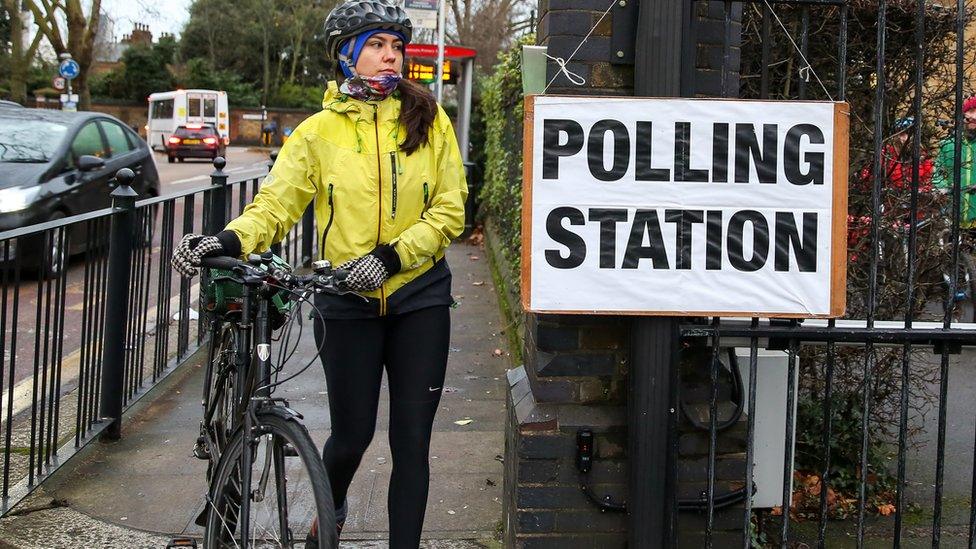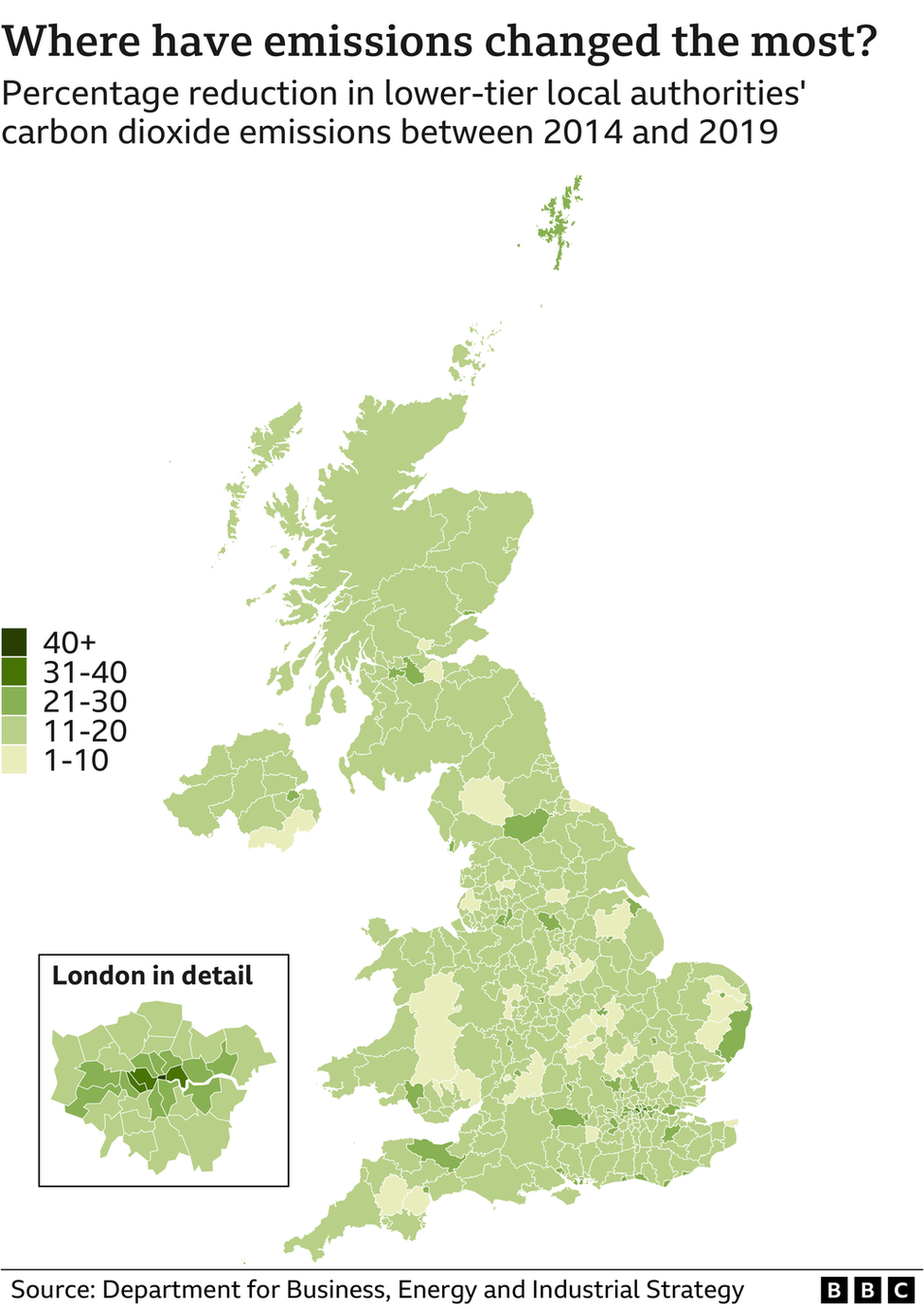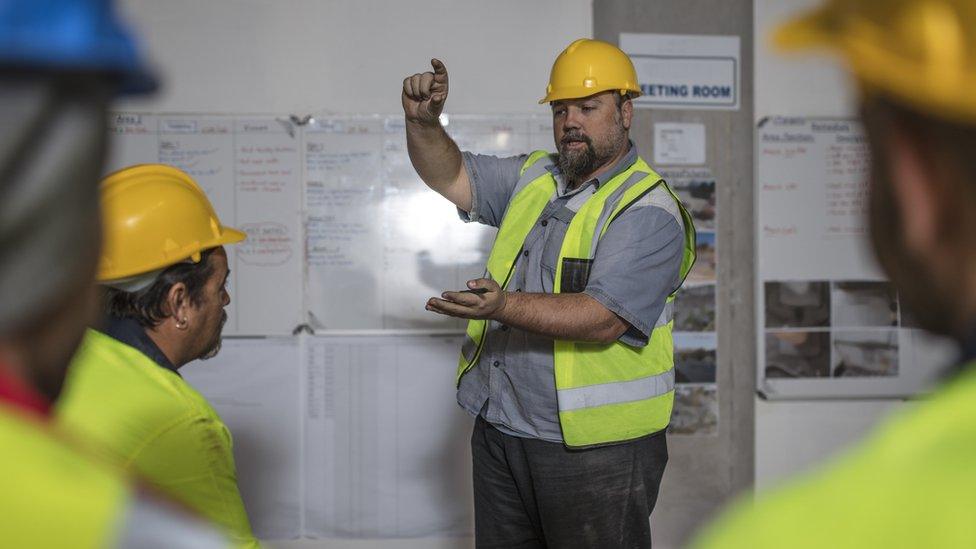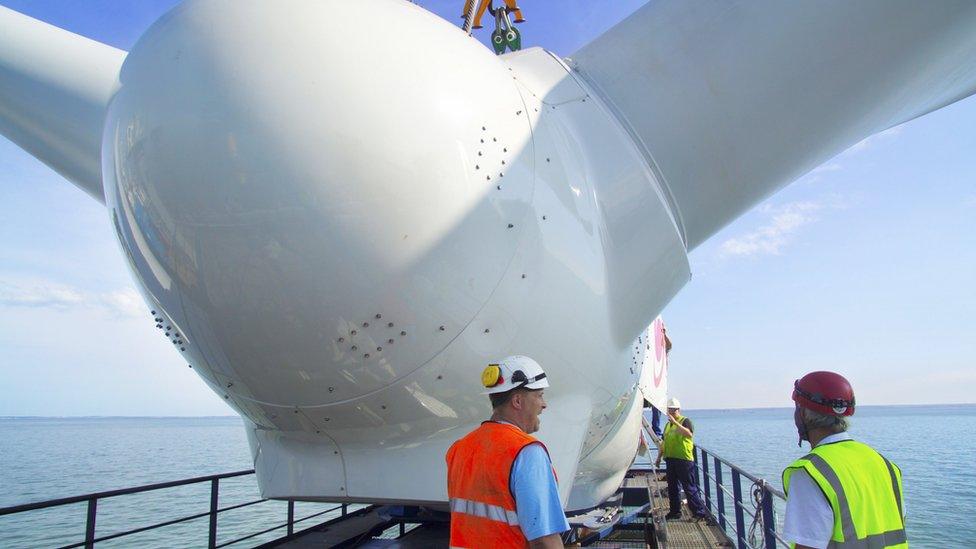Elections 2022: How are local councils tackling climate change?
- Published

Local elections are taking place across England, Scotland and Wales on Thursday, and environmental questions may play a large part in people's voting decisions.
The UK has a national ambition to be net zero by 2050. Although councils are limited in their powers, they can still exert significant control over emissions at a local level.
How much can local councils do to tackle climate change?
Authorities can "exert control over around 6% of local emissions and have at least some degree of influence over more than half of local emissions," according to Jamie Brogan of Edinburgh University Climate Change Institute, external.
Most councils in the UK have now declared a "climate emergency"., external This means they recognise that climate change is a serious issue and needs to be acted on.

The next step is to develop a climate action plan outlining how they will use council powers to cut emissions in the local area.
Andy Gouldson, Professor of Environmental Policy at Leeds University says that councils should be focused on reducing emissions from transport and buildings, as these make up 80% of a local area's direct carbon footprint.
Less driving and more walking
Local authorities have the power to influence how people move around their area, and to promote greener forms of travel.
For instance, they can help residents switch to electric vehicles by increasing the number of public chargers on the street.

A traffic barrier in south London - low traffic neighbourhoods (LTNs) have become a divisive issue in local politics
In Great Britain local authorities own many lamp posts where chargers can be built into, and control 18,670 hectares of car parks, external which can be used as charger locations.
They can also use planning powers to develop more space for pedestrians and cyclists.
For instance, the London Borough of Waltham Forest, external has installed 18 miles of segregated cycle lanes and 62 new pedestrian crossings.
More controversially, many councils have also introduced low traffic neighbourhoods (LTNs), which prevent cars using residential areas as cut-throughs to avoid main roads.
While some people have welcomed LTNs, others complain that they have increased traffic jams in bordering areas. The issue is expected to influence how some people vote in the upcoming elections.
Under the new Bus Back Better strategy, external, local councils in England also have greater responsibility for developing bus routes.
Efficient housing
UK homes are the coldest in Europe, external, poor insulation and draughty doors mean households spend 70% of their energy on heating and cooling, external.
Local authorities have a direct opportunity to tackle this situation. About half of councils in the UK currently own their social housing, and over 80% of councils have their own housing development companies, external, allowing them to invest and install insulation and other energy-saving measures.
The government estimates that these measures could not only reduce emissions by 6 million tonnes by 2030, external, but also save households up to £300 per year on their energy bills, external.
Funding these projects is perhaps the biggest obstacle for local authorities. They have seen a 16% drop in revenues since 2010, external - mostly because of reductions in central government cuts.
It's harder for councils to help privately owned properties, although they can help draw up area-wide contracts to get reduced rates for insulation for homeowners.
And Greater Manchester Combined Authority (CA) has provided residents with local grants for insulation, and launched a Retrofit Skills Bootcamp, external to train 200 local people in insulation installation.

The UK government wants two million green jobs by 2030 which includes insulation fitters
Local green energy
Councils can help reduce emissions by supporting the development of onshore wind turbines by including them in Local Plans (their five-year outline for what local development can take place).
They can also encourage local green networks - small energy generation systems - to provide low carbon energy and reduce the cost of energy for local people.
Bristol City Council leased council-owned land at reduced rates for Ambition Community Energy, a community interest company, to develop England's largest wind turbine in northwest Bristol.
This also provided provided development grants and other financial support through the Bristol and Bath Capital scheme.

Bristol council has been developing wind energy projects since 2013
It is estimated that the turbine could save 50,000 tonnes of carbon over its lifetime, and make £4.2m in profits, external from selling energy to the grid, which will then be invested in the local area.
What other climate action can councils take?
Although housing and transport produce the most emissions, councils also have powers to reduce the climate impact from other areas:
Recycling and waste: It is up to local authorities to decide how often waste is collected and what recycling services are offered - average England household recycling rates, external range from 7.9 % to 64.2 % depending on the local authority
Councils can also improve public green spaces and increase tree planting on their land to remove carbon dioxide from the atmosphere - some have promised to plant a tree for every person